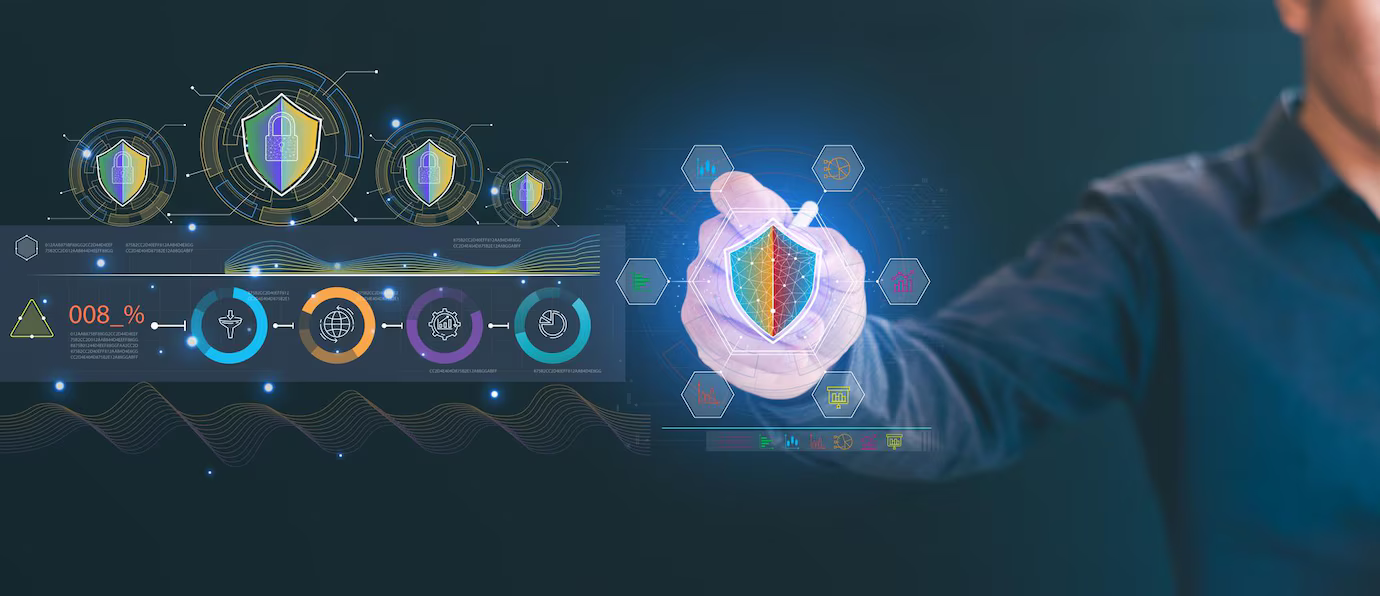
Introduction
In today's hyper-connected, cloud-first world, the ability to deliver high-quality, secure software at speed has become a critical differentiator. Yet, the traditional approach of bolting security onto the end of development cycles no longer works — not when cyberattacks are evolving faster than software releases. According to IBM’s X-Force Threat Intelligence Index 2024, 26% of cyberattacks exploited vulnerabilities that could have been prevented with earlier security testing (IBM Report). Organizations are realizing that reactive security strategies are unsustainable and that security must be woven into the very fabric of development processes.
Enter Shift Left Security — a strategic, proactive methodology that embeds security early and often throughout the software development lifecycle (SDLC). In this blog, we explore what Shift Left Security means, why it's essential today, compelling industry statistics, best practices for implementation, and how Engro is helping businesses lead the charge towards more secure, resilient digital futures.
What is Shift Left Security?
In software development, the term "shift left" means moving essential activities — like testing and security — earlier in the project lifecycle. Shift Left Security applies this principle by integrating security practices, controls, and testing from the very beginning — during design, coding, and even requirement gathering stages.
Traditionally, security has been treated as a final checkpoint, leading to costly delays and vulnerabilities slipping into production. Shift Left Security flips this model, embedding security at every phase, enabling teams to detect issues early, fix them faster, and minimize long-term risk.
Think of it like constructing a building: instead of reinforcing weak walls after it's built, you ensure that every brick laid meets strict safety standards from the ground up.
Why Shift Left Security is No Longer Optional?
The need for early-stage security integration is driven by escalating digital risks and operational demands:
- The Cost of Vulnerabilities is Exploding: The IBM Cost of a Data Breach Report 2023 found that the average data breach now costs organizations $4.45 million, the highest in history.
- Attack Surfaces are Expanding Rapidly: According to Gartner, by 2026, 60% of organizations will have suffered a cloud-related security incident due to misconfigurations and vulnerabilities (Gartner Report).
- Regulatory Pressure is Mounting: With regulations like GDPR, CCPA, and the new Digital Operational Resilience Act (DORA) in Europe, failing to build secure-by-design applications now carries heavy financial and reputational penalties.
The conclusion is clear: security can no longer be treated as an afterthought. Organizations must shift left to survive and thrive.
The Benefits of Shift Left Security
Adopting a Shift Left approach leads to measurable gains:
Reduced Costs:
- Fixing vulnerabilities during development costs up to 30x less than post-deployment fixes (Ponemon Institute, Study Link).
Faster Development Cycles:
- Continuous security testing prevents bottlenecks, enabling faster, safer deployments without last-minute delays.
Improved Developer Awareness:
- By integrating security early, developers adopt a more security-conscious mindset, writing safer code from day one.
Better Compliance:
- Built-in security controls help organizations meet audit requirements proactively rather than scrambling during compliance checks.
Core Components of Shift Left Security
To implement Shift Left Security effectively, focus on these critical areas:
- Secure Design Principles: Conduct threat modeling, risk assessments, and architecture reviews during planning.
- Secure Coding Standards: Train developers on frameworks like OWASP Secure Coding Practices (OWASP Guide).
- Automated Security Testing: Integrate Static Application Security Testing (SAST), Dynamic Application Security Testing (DAST), and Software Composition Analysis (SCA) tools into CI/CD pipelines.
- Continuous Monitoring: Post-deployment vulnerability scanning ensures ongoing security, even after release.
According to GitLab’s 2023 DevSecOps survey, 70% of developers now expect security scanning to be part of their everyday DevOps workflows (GitLab Report).
Engro’s Capabilities in Shift Left Security
At Engro, we understand that proactive security is the bedrock of sustainable innovation. Our Shift Left Security solutions are designed to seamlessly integrate into DevOps pipelines, empowering organizations to deliver secure software without compromising agility.
Key Capabilities:
DevSecOps Expertise:
- Engro’s security engineers collaborate closely with development teams to embed security throughout the SDLC — from design to deployment — ensuring early threat modeling, secure coding practices, and automated vulnerability scanning.
Advanced Security Automation:
- We deploy best-in-class tools for SAST, DAST, SCA, and container security scanning, fully integrated into CI/CD workflows, enabling real-time feedback and faster remediation.
Custom Security Frameworks:
- Recognizing that one size doesn’t fit all, Engro designs custom DevSecOps frameworks tailored to your industry, compliance needs, and operational priorities.
Continuous Compliance and Governance:
- Through automated audits, real-time policy enforcement, and proactive reporting, Engro ensures organizations meet standards like GDPR, HIPAA, PCI DSS, and DORA, reducing audit preparation time by up to 50%.
Real-World Success:
In a recent project with a leading fintech firm, Engro helped reduce their security vulnerabilities by 42% within the first three months of DevSecOps adoption while improving deployment frequency by 30% — a testament to the power of shifting security left.
Learn more about Engro’s DevSecOps services here.
Building a Shift Left Culture
Embedding security tools is not enough; organizations must also foster a Shift Left mindset:
Security Champions:
- Identify developers who can advocate security best practices within teams.
Collaborative Culture:
- Break down silos between development, operations, and security teams through joint planning, retrospectives, and hackathons.
Continuous Education:
- Ongoing security training leads to 50% fewer critical vulnerabilities, according to Puppet’s State of DevOps 2023 report (Puppet Report).
Executive Sponsorship:
- Leaders must prioritize security in strategic goals, investments, and KPIs to drive real change.
Real-World Examples of Shift Left Security in Action
Netflix:
- Netflix embeds security directly into developers' workflows with automated tools like Lorca, which performs continuous vulnerability scans (Netflix Tech Blog).
Capital One:
- Capital One integrated security checks into every stage of their CI/CD pipeline, cutting vulnerability detection times from days to minutes (AWS Case Study).
Future Trends: What’s Next for Shift Left Security?
AI-Driven Security:
- AI models like GitHub Copilot X are accelerating vulnerability detection with predictive analytics (GitHub Copilot).
DevSecOps Platforms:
- Integrated DevSecOps platforms are removing integration headaches by combining development, security, and operations into unified environments.
Zero Trust Development Environments:
- The Zero Trust model is extending into development, enforcing "never trust, always verify" principles even inside dev environments.
Security as Code:
- Policies and controls will increasingly be codified, versioned, and automated just like application code.
Conclusion: Build Fast, Build Smart, Build Secure
In the new digital economy, software speed alone isn’t enough — security must move at the same pace. Shift Left Security enables organizations to detect and fix vulnerabilities early, reduce costs, comply with regulations effortlessly, and protect brand trust.
Organizations like Netflix, Capital One, and innovators partnered with Engro are already proving that prioratising DevOps security leads to faster, safer, more resilient outcomes.



